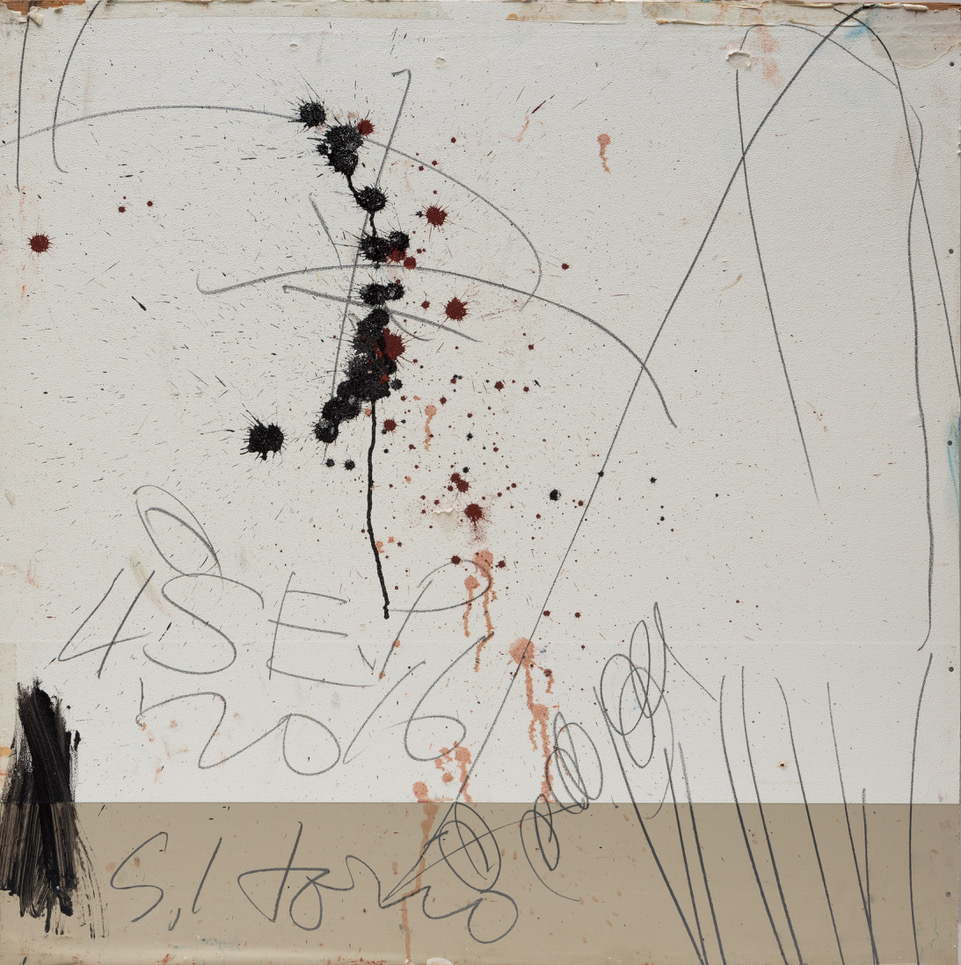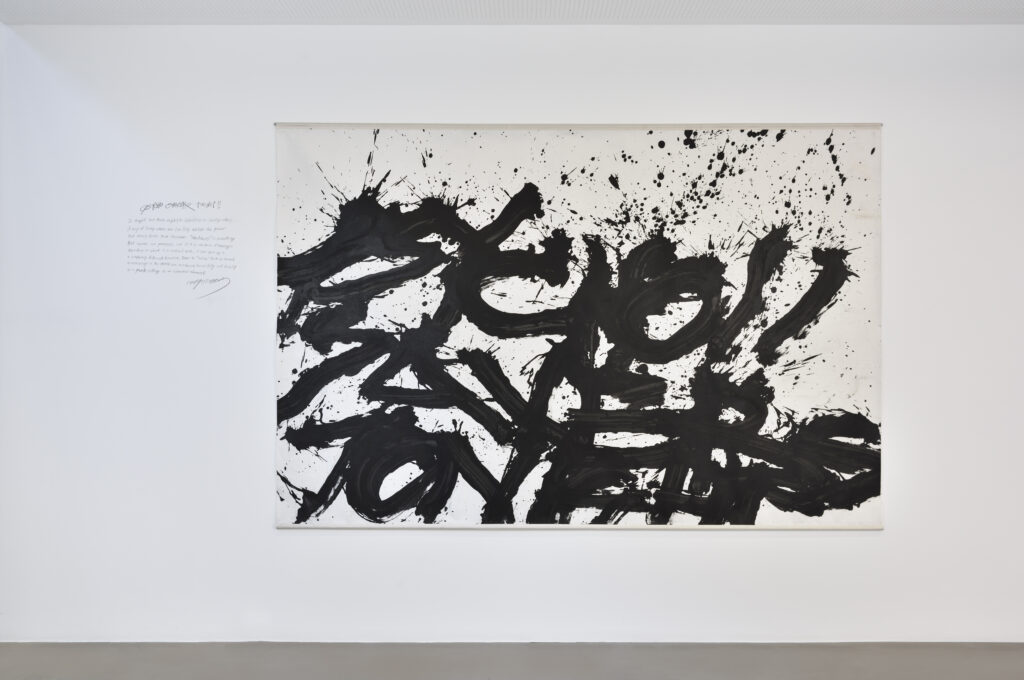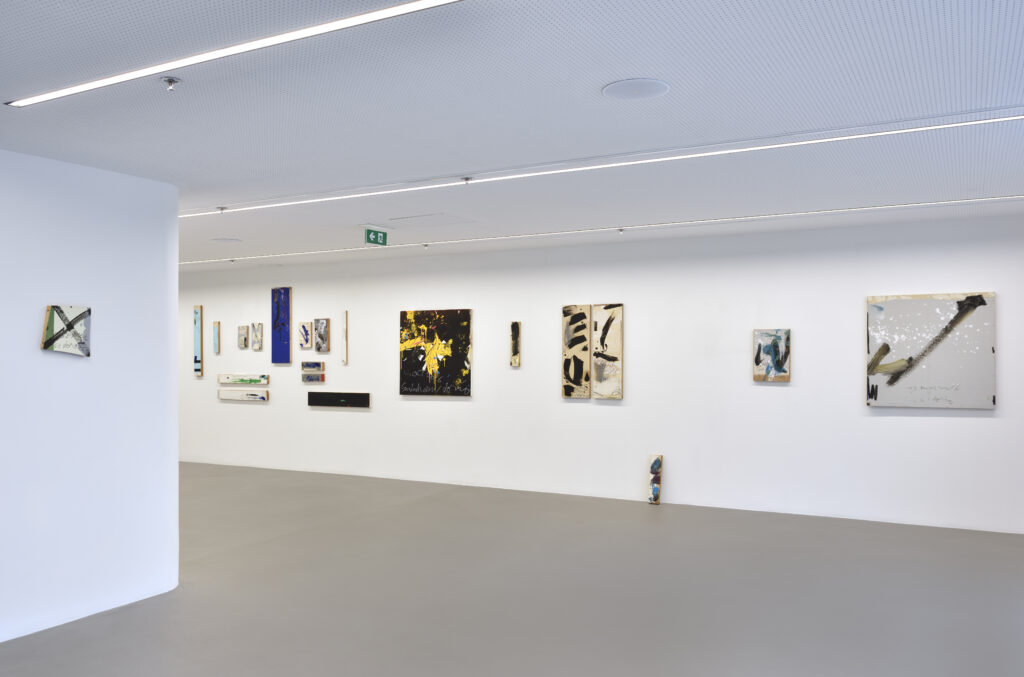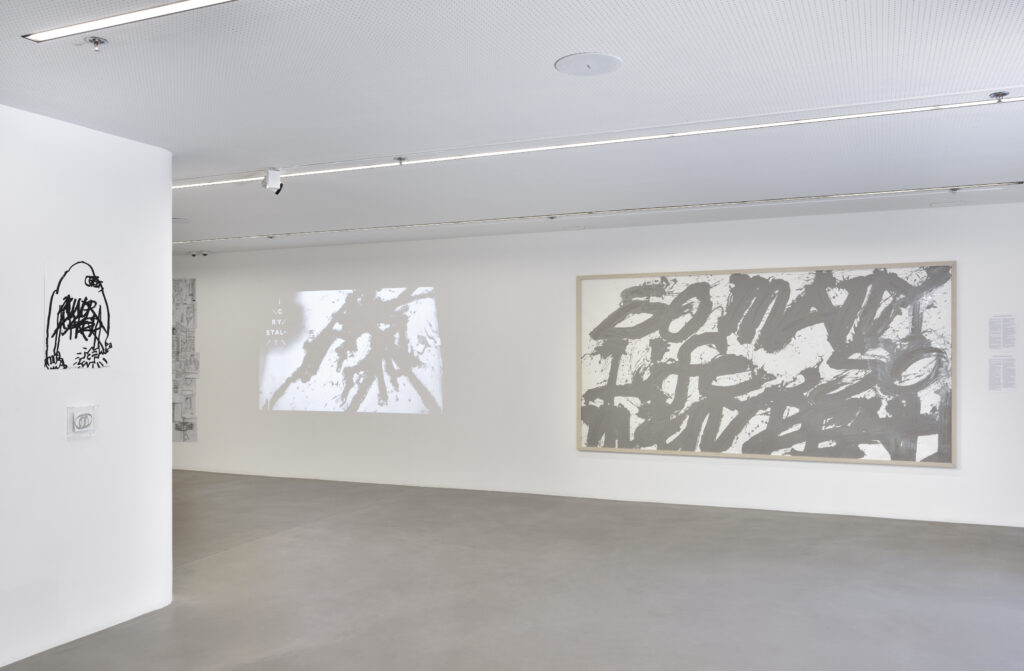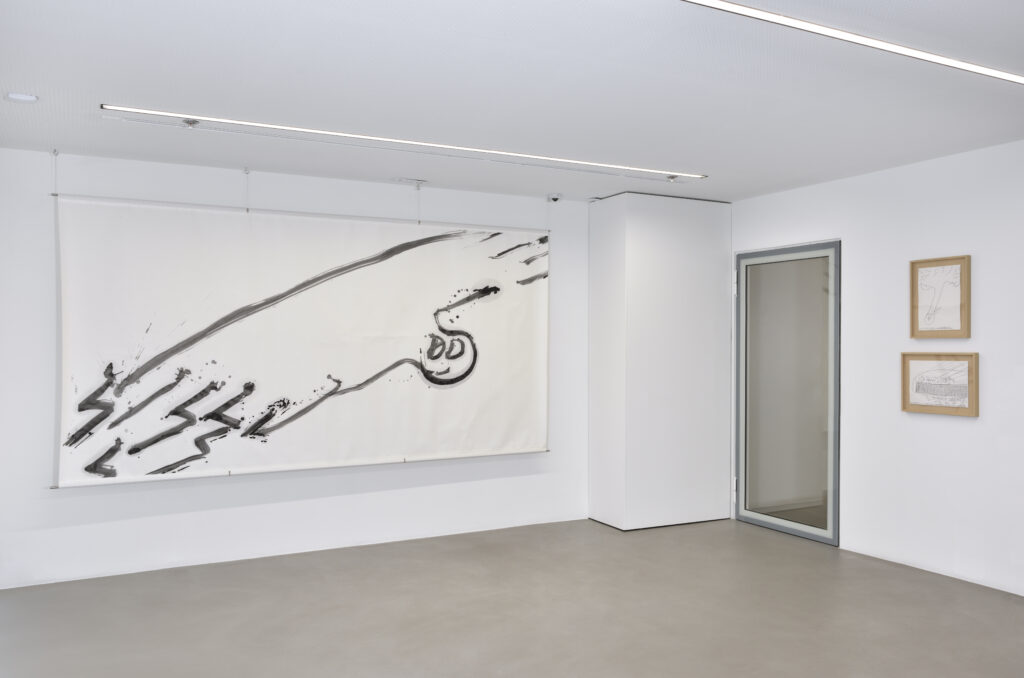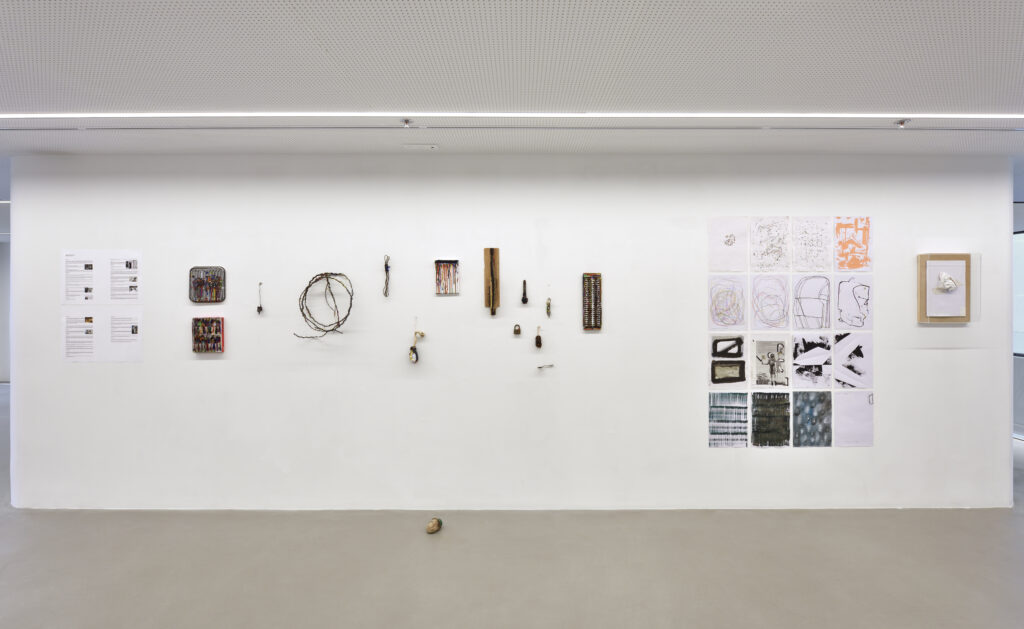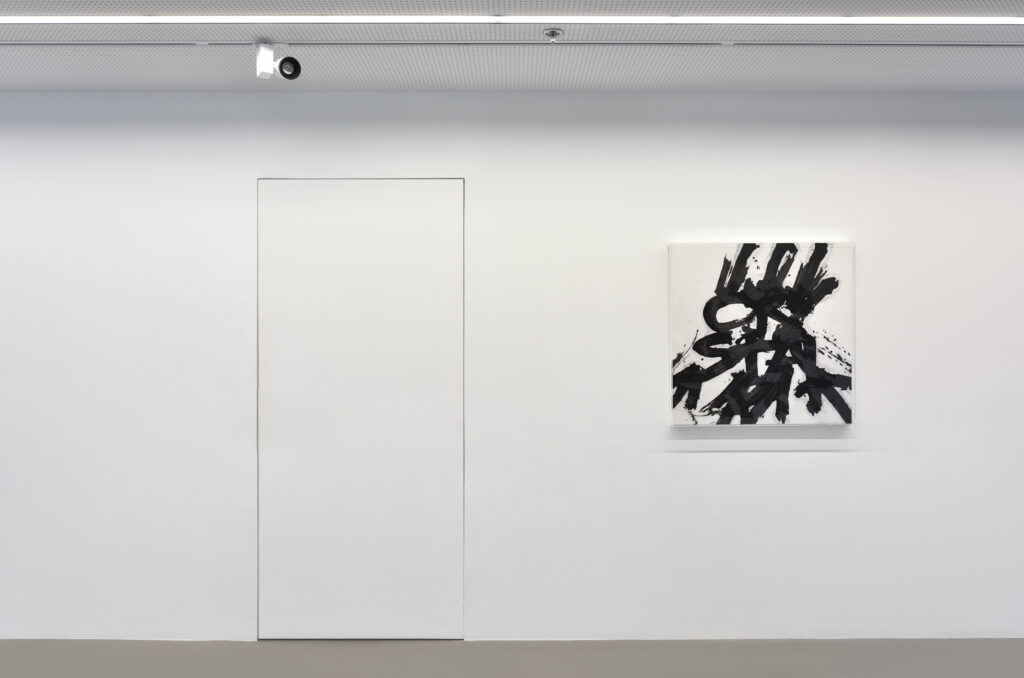L’Atlas is pleased to invite the Japanese gallery Nao Masaki for the exhibition ALIVE. GUTAI, postwar avant-garde art movement and modern punk SHODO. Works of artists Sadaharu Horio and Lintalow Hashiguchi will be shown together.
Sadaharu Horio was born in 1939 in a working-class neighborhood in Kobe, Japan where he lived and worked for the rest of his life. He became a part of the Gutai movement in Japan from the 1950s to the early 1970s and continued his work as an artist until his death in 2018.
A dare made with his art teacher Tokumitsu Kioka sparked Horio’s interest in art at the age of six. In 1955, Horio started working at a shipyard in Kobe where he joined the company’s Western-painting club. Two years later, he met Jiro Yoshihara, leader of the Gutai Art Association, and later became a member of the group until its dissolution in 1972.
Sadaharu Horio participated in many group and solo shows including the 15th Gutai Art Exhibition and exhibitions at the Shinanobashi Gallery in Osaka, at the Kyoto Kita-Shirakawa Art Village, and monthly exhibitions at a bar called Bonkura in Kobe. In 1979, he opened the Higashimon Gallery on the second floor of a noodle shop.
His work is characterized by a strong connection with everyday life and a rejection of boundaries between high and low art. Indeed, Horio used unconventional mediums in his works such as scrap materials collected at the shipyard, string, pieces of wood, boxes and rocks.
His influences were multiple and diverse. A conversation with the leader of a religious group inspired Horio’s interest in visualizing “air”. Japan also had a profound influence on Horio’s work, both in terms of its artistic traditions and its cultural values, such as Japanese calligraphy, harmony, balance, and Japanese philosophy that values the beauty of imperfection and impermanence.
Lintalow Hashiguchi was born in Nagasaki Prefecture in 1985. In 2004, he entered Fukuoka University of Education, where he studied traditional calligraphy and its aesthetics.
Influenced by the entanglement of aggressive sounds and emotional lyrics in punk rock, by 1960’s Butoh (experimental dance), Gutai art, as well as by avant-garde art, Hashiguchi uses his whole body when creating his works, letting the words that come to mind flow onto the medium used. He is especially inspired by Yuichi Inoue, an avant-garde calligrapher, and his belief that calligraphy arises from our everyday lives, giving people the energy to keep going.
Indeed, Hashiguchi believes that letters and words have a soul that radiates life, “bubbling out and vibrating in the air like a living creature”. Using an unexpensive towel as a writing tool, he writes in a single boundless burst of speed, giving his work an unusual presence in our current world where words are mere symbols typed and printed or shown on a screen. He draws inspiration from Japan’s cultural heritage of wordplay, such as “Haiku”, short poems of three to five lines.
In 2008, he held his first solo exhibition at the IAF Shop in Fukuoka (that has since been held annually). In 2015, he was selected as one of the members of Tensakukai, a group exhibition paying homage to Yuichi Inoue. In 2018 and 2019, he was picked as one of the artists in ART SHODO TOKYO, and won the grand prize at LUMINE meets ART AWARD 2018-2019. He has since participated in many solo and group shows in Japan and abroad.
About Nao Masaki
Strongly aware of social disparities and gender issues, Nao Masaki became involved in socio-political activities at a young age, before realizing that a transformation of the social system was only possible on condition that the sensitivities individuals evolve.
In 2005, she inaugurated Gallery Feel Art Zero, whose concept is to confront art to feel the work in its raw state, without judgment through knowledge. The gallery was renamed Nao Masaki Gallery in 2018, a year which also marked her first participation in national and international contemporary art fairs.
Today, Nao Masaki continues to question and experiment with the essence of art as a gallery owner and artistic director, through the organization of public artistic events. Lately, her interest has focused on communication between art and society.
With
- Sadaharu Horio
- Lintalow Hashiguchi
Événement
Nao Masaki
- 2-3-4 Aoi, Higashi-ku, Nagoya, Japon
- 052 932 2090
- www.naomasaki.jp
